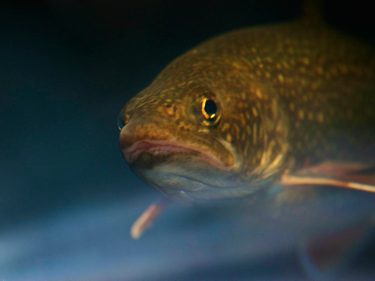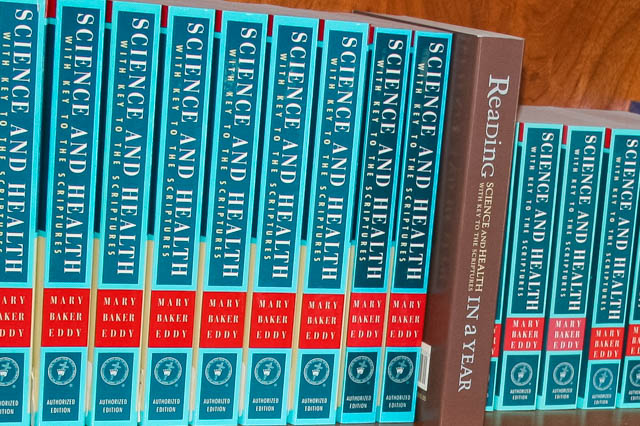
My non-fiction reading in recent months has been consumed with reading about overfishing. I’ve been a vegetarian for over 25 years, prompted in large part because I read Diet for a Small Planet by Frances Moore Lappe and was moved to do my part for human sustainability. Over fifteen years ago I slowly started phasing in eating fish, needing more protein, and became a piscivore as well as a vegetarian.
A couple years ago I was deeply influenced by Micheal Polon’s book The Omnivore’s Dilemma to try to eat more organic and local food; I was inspired to reduce my carbon imprint related to food and attempt not to pollute either the earth or my body. It has since become obvious to me that I didn’t really know where my fish was coming from, and whether that was sustainable either. Hence my recent self-education, which has been eye-opening as well. (Quotes below are from End of the Lineby Charles Clover.) I will try here to summarize this vast topic:
At the present rate of consumption, the world will run out of wild seafood by 2048.
Only 2-3% of the sea’s big fish are left.
Politicians ignore the science on this. Governments prefer to work with data obtained from trawlers than from scientists. Fishermen vote; fish don’t.
Seafood is the most globalized industry there is.
Eating seafood is considered a healthy choice for many reasons, and is growing in popularity.
There are 75 million square miles of unregulated ocean, excluding the 200 miles at the perimeter of each country.
There are already 150 dead zones in the ocean due to over fishing, and some are as large are Ireland. A dead zone, striped of life, no longer has oxygen with which to support life.
The UN Food and Agriculture Organization says a third of what is caught goes over the side. Add to that number the animals destroyed on the bottom or killed in nets, the amount used to feed farmed fish, and fish wasted because it did not sell, and only 10% of the world’s marine life destroyed actually goes to feed people.
Bottom Trawling is a devastating method of harvesting fish. It is likened to using a bulldozer in a rainforest to try to catch songbirds for food. Some trawlers have a “bycatch” (or stuff they aren’t fishing for) of 85%. It is extremely wasteful and mows down habitats. Fish companies have an ingrained culture of secrecy about their bycatch. Their policy seems to be that they can’t be blamed for what they don’t know is being destroyed. There are 200 of these vessels on the seas. They can decimate anything within 1.5 miles below the surface and every year they scour an area of sea bottom twice the size of the US. This is subsidized by the world’s governments without which they would operate at a loss! Big trawlers can cost as much as $89.3 million, and are designed to catch, process and freeze up to 440 tons of fish a day, carrying 7,700 tons in its hold. Trawlers are not regulated and should be, but better yet, we should move to selling only line-caught fish.
New technology makes it possible to find hidden hideaways before invisible, and until now, never fished. The sea floor is less well mapped than the surface of the moon. In these areas you “can get 17 tons as a result of two minutes fishing.” In many areas “we will never even know what has been destroyed.”
Atlantic bluefin tuna is listed as an endangered species equivalent to the giant panda in its closeness to extinction, but it is still fished and sold for food. “You’d be amazed at the number of chefs who serve bluefin in New York City.” When will being caught eating endangered species will be recognized as bad (or worse) than being seen in real fur?
“Overfishing has been and no doubt will be again, a cause of war and international disputes.”
“Meanwhile, the United States, which is better than most at managing fisheries, now passes on the greatest parts of its demand for fish to oceans far from its shores, where it can exert only the most trivial influence over how fisheries are managed. In fairness, it is not alone in so doing.”
“The produce of the sea around our coasts bears far higher proportion to that of the land than is generally imagined. The most frequented fishing grounds are much more prolific of food than the same extant of the richest land. Once a year, an acre of good land, carefully tilled produces a ton of corn… The same area at the bottom of the sea in the best fishing grounds yields a greater weight of food to the persevering fisherman every week of the year.” –Professor Thomas Huxley, London, in an address to the International Fisheries Exhibition in 1883.
An example – the story of cod: In 1883 populations of cod were thought to be inexhaustible. Huxley said, “the multitude of these fishes is so inconceivably great and the number we catch relatively insignificant.” They made the first classic mistake: over-estimation of stock. In the time of Cabot (1497) there were 4.4 – 7 million tons of cod; they were so dense they slowed boats down and you just had to lean over to scoop them up. There were an estimated 1.39 million tons of cod 150 years ago; now there are 55,000 tons, a decline of 96% in 150 years. Cod is now at 10% of the level needed for the population to sustain itself, yet there are still quotas to catch them. They are being caught faster than they can reproduce. Cod are now growing less quickly than they did in the past. The largest cod are the ones that spawn, but they are also the first fished. Every year the stock is less productive and more efficiently fished. “They used to land fish as big as a man. Now you are lucky if you get one as big as your hand.” Average sized cod used to be 40 inches; now the average lengths have fallen to 16 inches. Wars were fought over cod in the 1960’s and 1970’s, and catches began to decline in the 1980’s. It took 12 years for this information to go public. The decline is believed to be about 770,000 tons a year. Newfoundland cod collapsed in the 1990’s. They were catching 810,000 tons of cod a year. In 1992 there were only 22,000 tons of cod left. In 2003 Canada officially declared cod endangered. (Canadian fisherman face $440 fine (in US dollars) if he catches a single cod. But when they fish for other things, they get 50-60 pounds of cod bycatch.) It took 500 years for it to disappear probably forever. They show no signs of returning. ICES (International Council for the Exploration of the Sea) advised in 2006 “zero catch” for cod, but politicians ignore this. World Wide fund for Nature in 2007 took the Council of European Union to court over failure to protect cod stocks. But you will find cod on the menu all over NYC and up and down the East Coast.
Government subsidies and unemployment insurance are the #1 reason for the cod collapse. With unemployment insurance a fisherman can fish fourteen weeks a year and live off the government the rest of the year. Without it there would be less fisherman and the cod not overfished. Globally, fishing subsidy is a staggering $50 billion a year, according to the UN Food and Agricultural Organization. Japan has the most subsidy with $2.3 billion, the European Union hands out $1.74 billion, and the US doles out $1.29 billion. Subsidies are a large portion of the value of sold fish. In the US it is 37% of the value, Japan 24%, and the EU, 22%, Subsidies also “create overcapacity in the industry. The global fishing fleet is estimated to be two and a half times bigger than needed to catch what the ocean can sustainably produce.” Politicians hand out subsidies not only to buy votes, but because of a “misguided belief that they are investing in the industry. In fact, in a hunter-gatherer economy, you invest only by leaving the resource alone.”
Economists would say there is an obvious connection between the leap in prices and the beginning of scarcity. It is a sellers market. The Tokyo fish market will pay triple what fish bring in elsewhere, so many fly their fish there. There is not only incentive to fish more than the next guy, whether it is legal or not, but also to incur an enormous carbon footprint flying the catch to markets all over the globe.
Toyko’s Fish Market (called Tsukiji) is the largest in the world, selling 660,000 tons a year. Europe’s market in Madrid is second largest, selling 220,000 tons a year.
Americans eat little seafood compared to other nations.
US: 17 pounds per head per year
Britain: 44 pounds per head per year
Canada: 52 pounds per head per year
Spain: 97 pounds per head per year
Japan: 128 pounds per head per year
A black market thrives. There is a startling extent of illegality, cheating, and tolerance of rule breaking. An estimated 100 Russian trawlers are illegally taking cod; they send them to China to be filleted and then they are sold to England for fish and chips. Also fish pirates avoid tight quotas by freezing fish at sea and delivering them directly to various ports. A favorite trick is to fish off the coasts of countries that are in political unrest and pillage their oceans while they are distracted or without governments. Also, 15% of the fish sold as wild caught is actually farmed. Often, one fish is sold as another. World Wildlife Fund believes actual catches are eight times declared totals.
Fish farming is inefficient because most fish are carnivores and must be fed fish. Most are unhealthy, so they must be drugged up, and are therefore not recommended as food. There is also much concern that inferior farmed fish may escape and spread disease to wild stocks or mate with them reducing the caliber of the wild stock. More than six meals a year of this poor farmed fish is considered dangerous to one’s health. Vegetarian fish like tilapia are the exception to avoiding fish farming, since they do not further deplete overfished stocks for food and are not so susceptible to disease because of naturally quick growth and short lives.
“It shouldn’t be that difficult to run a fishery sustainably. You would think it should be easier than splitting the atom, landing a rocket on the moon, fixing the hole in the ozone layer, managing a currency, or decommissioning the world’s nuclear arsenals. But if failure to do it is anything to go by, its harder than any of these tasks.” “If a sustained attempt is not made to save the most popular species of wild fish, we are going to be left mostly with farmed ones. Are we happy about this?”
“The problems [with overfishing in general] are worse than many people imagine and the solutions more controversial.” They are controversial because, “‘You can’t maximize the economic and the social and the ecological all at the same time.’ In other words something’s got to go.”
So what fish can we sustainably eat and not be party to the ongoing plunder of the seas? Click here for a link for a wallet sized chart. Print it out, study it, and join me in trying to navigate these tremulous waters.






